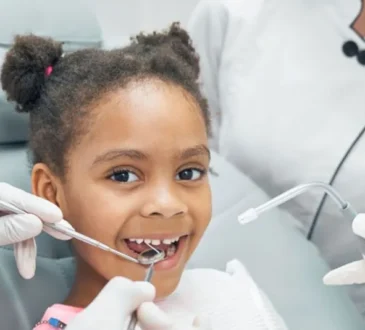Gingivitis and Tooth Decay: Understanding the Link and How to Prevent Both for a Healthier Smile

Maintaining a healthy smile goes beyond appearances — it reflects the overall health of your teeth and gums. Two of the most common oral health concerns, gingivitis and tooth decay, often occur together and can significantly impact your oral wellness if left untreated. Understanding the connection between these conditions and how to prevent them is crucial for keeping your teeth strong, gums healthy, and smile bright.
What Is Gingivitis?
Gingivitis is the earliest stage of gum disease and occurs when plaque — a sticky film of bacteria — builds up along the gumline. The bacteria release toxins that irritate the gums, leading to inflammation. Unlike advanced gum disease, gingivitis is reversible with proper oral hygiene.
Common signs of gingivitis include:
-
Red, swollen, or tender gums
-
Bleeding during brushing or flossing
-
Persistent bad breath
-
Mild gum discomfort
If detected early, consistent brushing, flossing, and professional dental cleanings can restore gum health and prevent progression to more serious gum disease.
What Is Tooth Decay?
Tooth decay, also called dental caries, occurs when acids produced by bacteria in plaque erode the enamel — the hard, protective outer layer of your teeth. Over time, this can lead to cavities, pain, sensitivity, and even infection if untreated.
Factors contributing to tooth decay include:
-
Frequent consumption of sugary or acidic foods and drinks
-
Poor oral hygiene
-
Dry mouth, which reduces natural saliva protection
-
Irregular dental visits
Tooth decay can be painless in its early stages, making routine dental care essential for early detection.
How Gingivitis and Tooth Decay Are Connected
Although gingivitis and tooth decay affect different parts of the mouth, they are closely linked. Plaque accumulation is the common factor behind both conditions:
-
Plaque left on teeth can harden into tartar, irritating the gums and causing gingivitis.
-
The bacteria in plaque also produce acids that erode tooth enamel, leading to tooth decay.
-
Gum inflammation from gingivitis can make it harder to clean teeth effectively, creating a cycle where decay and gum disease feed off each other.
Essentially, preventing plaque buildup is the first step to stopping both gingivitis and tooth decay.
Preventing Gingivitis and Tooth Decay
Preventing these oral health issues requires consistent daily care and professional guidance. Here’s how to protect your teeth and gums:
-
Brush Twice Daily: Use fluoride toothpaste and a soft-bristled toothbrush to remove plaque along the gumline and all tooth surfaces.
-
Floss Daily: Flossing removes food particles and plaque from between teeth where brushing cannot reach.
-
Rinse with Antiseptic Mouthwash: Daily rinsing can help reduce bacteria, support gum health, and prevent plaque formation.
-
Maintain a Balanced Diet: Limit sugar and acidic foods, and include foods rich in calcium and vitamins to strengthen teeth and gums.
-
Avoid Tobacco Products: Smoking or chewing tobacco increases the risk of both gingivitis and tooth decay.
-
Regular Dental Visits: Professional cleanings and checkups every six months remove hardened tartar and detect early signs of decay or gum disease.
The Importance of Early Detection
Early detection of gingivitis and tooth decay is key to preventing long-term damage. If left untreated, gingivitis can progress to periodontitis — a serious gum disease that can cause bone loss and tooth loss. Similarly, untreated tooth decay can lead to severe cavities, infections, and the need for restorative procedures like fillings or crowns.
By recognizing warning signs early, such as bleeding gums, tooth sensitivity, or persistent bad breath, you can seek timely treatment and prevent more invasive interventions.
Maintaining a Healthy Smile Long-Term
Preventing gingivitis and tooth decay isn’t just about avoiding pain or dental procedures — it’s about maintaining long-term oral health. Healthy teeth and gums allow for comfortable chewing, fresh breath, and a confident smile.
Tips for long-term oral health include:
-
Staying hydrated to support saliva production
-
Chewing sugar-free gum to reduce plaque buildup
-
Using fluoride treatments or rinses as recommended by your dentist
-
Being mindful of lifestyle choices that impact oral health, such as diet and tobacco use
The Takeaway
Gingivitis and tooth decay are common yet preventable oral health issues that are closely linked through plaque buildup. Maintaining a consistent oral hygiene routine, attending regular dental checkups, and making mindful lifestyle choices are the most effective ways to protect your teeth and gums.
By understanding the connection between gum inflammation and enamel erosion, you can take proactive steps to enjoy a healthier smile, prevent dental pain, and reduce the risk of long-term oral complications.




